My sasquatch sighting in the summer of ‘97
and how the Falcon Projectwas born
by William Allen Barnes
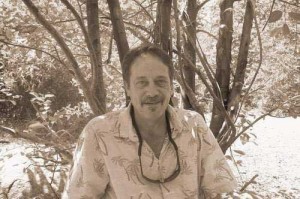 I started gold dredging in 1995 working underwater. In July of 1997 I drove into my claim about 9:00 p.m. I have never owned a truck; always use a car. I would always have a friend with a truck bring my dredge in for me. I built a small fire to cook a little food then get a little sleep before the next day. I set my tent up (it was a pup tent, so small I had to sleep angled corner to corner). I would never used the rainfly over the roof of the tent. I liked to look at the stars as I was going to sleep. The whole top of the tent was a screen mesh. My camp was on the end of the south fork of Green Horn River in Nevada County, California. I fell asleep between 10:30 11 o’clock. I have always slept well out in the wilderness, I was always used to all the normal sounds, and always woke up to sounds out of the ordinary.
I started gold dredging in 1995 working underwater. In July of 1997 I drove into my claim about 9:00 p.m. I have never owned a truck; always use a car. I would always have a friend with a truck bring my dredge in for me. I built a small fire to cook a little food then get a little sleep before the next day. I set my tent up (it was a pup tent, so small I had to sleep angled corner to corner). I would never used the rainfly over the roof of the tent. I liked to look at the stars as I was going to sleep. The whole top of the tent was a screen mesh. My camp was on the end of the south fork of Green Horn River in Nevada County, California. I fell asleep between 10:30 11 o’clock. I have always slept well out in the wilderness, I was always used to all the normal sounds, and always woke up to sounds out of the ordinary.
By my best guess, it was between one or two a.m. the morning when I was awakened by large rocks sliding from the hillside around the corner of the canyon. Iin ancient riverbeds were gold miners dig hydraulically, you always hear gravel rolling down the banks, but this night the rocks were a lot bigger making more noise than usual, and where the canyon turn around the corner it was like an amphitheater, and the noise from from upstream echoed off the walls towards my camp. It was very dark out and you have to understand this hydraulic area from 1800’s, was covered with white Quartz stone. So I got on my knees so I could see through the screen up the canyon. About 10 or 20 seconds later I could not hear the rocks sliding, but about that time I could see a dark figure coming around the corner. At first I thought it was a bear, which were quite common to see in this area. As it was coming down the canyon, it seemed like it was kind of wandering down the canyon — a little bit to the left, a little bit to the right. My car was parked above my tent at an angle and when the creature was between the hood of my car and the tent (about 30 feet from the car) that’s when I realized this is not a bear — way too big and tall. When it got to the front of the car, it took a beeline to my tent. I had nowhere to go. When it walked up to the tent, do not think I was not scared. My heart was beating so hard (not fast but hard) I could hear it pounding in my ears. This creature stopped about 3 feet away from me, I don’t know how long it stood there. It seems like time stood still. At first I thought it was leaning over staring at me (it was dark out, I could see where the eyes should be, the nose and mouth but not
clearly, but I could see clearly that figure from the quartz stone and gravel in the background. The hair seemed very well manicured or other words healthy. Like I said before, I don’t know how long it stood there but it turned to my right and what amazed me was how thick it was other words very massive, I could see it’s facial structure, the eyes, were the nose was more flat not like ours The chin was short; it seemed like no neck at all; his head and shoulders looked like one piece of his body. When it turned sideways I realized it was not bent over looking at me. It had a slight tilt to the body from the waist up — not real pronounced – just a slight tilt.
 It walked a straight line across the creek and up the hill, and I do have to say, this hill would be nearly impossible for a human to walk up. But this creature walked so fluidly up this hill and never missed a beat. I could see that this creature was made for the woods. After it disappeared over the hill I stayed on my knees looking up the hill to see if it was going to come back. I guess about 5 minutes past and I finally sat down in my tent very shook up and wondering what had just happened to me. 45 minutes or more must have passed by as I sat there, and then all of a sudden I had this calm feeling come over me and I realized it was simply curiosity. To my amazement, I went to sleep shortly after.
It walked a straight line across the creek and up the hill, and I do have to say, this hill would be nearly impossible for a human to walk up. But this creature walked so fluidly up this hill and never missed a beat. I could see that this creature was made for the woods. After it disappeared over the hill I stayed on my knees looking up the hill to see if it was going to come back. I guess about 5 minutes past and I finally sat down in my tent very shook up and wondering what had just happened to me. 45 minutes or more must have passed by as I sat there, and then all of a sudden I had this calm feeling come over me and I realized it was simply curiosity. To my amazement, I went to sleep shortly after.
When I woke up the next morning, I stood outside my tent where this creature was standing to figure out how tall it was. My estimate was between
6’4” and 6’7”. Weight between 400 and 500 pounds — more like 500. The ground in the canyon was all rocks and gravel so I could see no tracks where this creature had been around my tent, and I certainly was not going to go looking for it.
I grew up in Oroville California as a kid, my dad was an engineer on the Oroville Dam in the ‘60s. As a kid I heard stories about these creatures, but never thought they could be real. After that night I knew they are real. My next thought was why someone had not filmed these creatures in the wild? I moved my camp to the other side of the canyon and spent about a month there and then sold my dredge. Armed with a camera, a coffee machine and a very dodgy centrifugal fruit machine , I set about checking the entire area out. I felt very uncomfortable working in that area for years to come. So for the next 3 to 4 years I would look for anything about these creatures, and why researchers could not film them. All the while I was very quiet about my encounter until I told my best friend. I told him what happened to me and he replied, “Maybe it was trying to communicate with you.” I turned and said, “That is a hell of a way to try and communicate with someone!” and then we laughed. He never laughed or ridiculed me and that opened the door for me to keep trying to find a way to film these creatures in the wild, in their natural habitat.
I found out over the years that in this field a lot of the researchers thought they knew everything about these creatures. I found out that they did not know a lot about them. I would call researchers, and they would tell me who do you think you are, what makes you think you can track them or film them in the wild, and some researchers were jerks and tell me that I knew nothing about these creatures. I could see this as true, because they knew nothing either — only what they thought they were.
I’m glad that I did not spend the last 15 to 16 years out the woods looking for these creatures, but I did spend about five years total in the woods mining. The country up there in the mountains is very rough. I know there are many photos of these creatures from trail cams out there, but the big problem is how easy it is to fake photos nowadays. My goal is to film them for long periods of time and make sure that any evidence that we collect could not be faked.
HOW THE FALCON PROJECT GOT STARTED
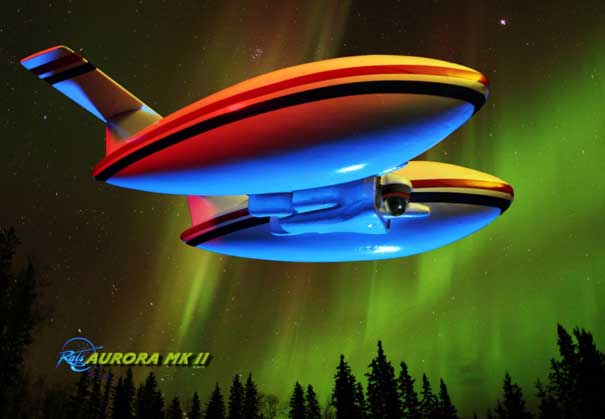 After many years looking at other researchers from outside the box, I realized they were still doing the same thing as they were years before, and there was something I remembered from being out in the woods so many years — I would hear planes/helicopters/passenger planes come over the woods, and most times (~ 90%) I could see the aircraft when it was close to straight up from me. That’s when I realized with thermal imaging if I could see you, you could see me, or vice versa. I first focused on model gas motor RC airplanes, (it was a great idea however to fast and could not hover and low airtime , and small payload) and then I spent time researching RC helicopters, the good side it could hover, bad side, loud low-flying time, and small payload, I even looked at glider planes, again to fast could not hover.
After many years looking at other researchers from outside the box, I realized they were still doing the same thing as they were years before, and there was something I remembered from being out in the woods so many years — I would hear planes/helicopters/passenger planes come over the woods, and most times (~ 90%) I could see the aircraft when it was close to straight up from me. That’s when I realized with thermal imaging if I could see you, you could see me, or vice versa. I first focused on model gas motor RC airplanes, (it was a great idea however to fast and could not hover and low airtime , and small payload) and then I spent time researching RC helicopters, the good side it could hover, bad side, loud low-flying time, and small payload, I even looked at glider planes, again to fast could not hover.
And then one day I read an article about future airships, the military are still using them, and I seen footage from airship filming downtown Miami. So while
I was researching them, I found out they could hover, go straight up and down, and could hold a large payload. But however the bigger the payload the larger the airship, and we could fly up to six hours before it had to be refueled, the only downside was a single airship could not fly in high winds, but this was okay just less fly nights, you have to remember at that this time I was looking at remote-control UAVs(unmanned aerial vehicles) and in the camera systems are out there you would not believe the technology we have in thermal imaging, high definition, telescopic lens were unbelievable, but with a price tag of about, low-end $40,000, high-end $500,000, why so high, we could film to over a mile away,(I have always planned this project as a noninvasive research program from day one).
So about four years ago, my first website was called Bigfoot 24/7, showing a airship with a camera mounted on it. I had a lot of people call me, email, newspapers, news stations contact me about my project. A lot of people said it would not work. However I always told them that it would, one way or another.
Now the main challenge with a 35-foot airship was the payload and high winds. One thing you have to understand in the world of lighter-than-air vehicles, all comes down to the weight and payload. So even from the beginning, there were obstacles that had to be overcome. Number one — FAA rules. As a civilian you could not fly a remote controlled (RC) or politically-correct unmanned aerial vehicle (UAV/drone) over 400 feet above ground level commercially. So after about 3 to 4 months into this project, I got e-mail from a company called RATS, Inc. (Remote Aerial Tripod Systems), an airship company owned by Steve Barkley. He wanted me to look at something that would be perfect for my
Project. When he showed me the dual airship concept it was perfect for our research program. You could fly this thing out of a tennis court and land it
back in the same spot. It needed no runway, could be hauled anywhere, and it had a 5-mile fly zone from point A to point B to point C. It could hover, spin on a dime, stop on a dime. In other words, this airship had precision that no other aircraft had. It was like a dream come true.
The next hurdle was getting permission from the FAA to fly up to 10,000 feet above sea level. This part took two years of calling at least three or four days a week, but getting no response to my needs. Then finally I got hold of a gentleman who knew everything about UAVs/drone that work for the FAA and how to be able to fly in the US as a research project under development and research, under a government institution. This is how Dr. Jeff Meldrum and the Idaho State University got involved. Without this collaboration, this project would never make it off the ground.
The dual airship had to be redesigned for the payload – gyro-stabilizer camera system. This required a 48-foot long side-by-side design, providing 4 to 6 hour flight time in up to 25 mile an hour wind. This airship is first of its kind with no propellers and quiet. So when I hear people say I have done this before or has been done before, they have to realize this concept has never been done. It would be a first. Even the camera system is custom made for the project. So when you see the airship’s price tag of $250,000 you have to understand you will find it rock-bottom price. I’ve done my research on airships and I have to say RATS, Inc. has gone out of their way to make this possible, and I want to say special thanks to Steve Barkley and RATS, Inc. for introducing their dual-airship concept to us, because we would never have made it this far with this proposal without them. This is technology at its best.
We are still in the fund-raising process. We are seeking funding from corporate/public/investor or just donations. We are non-profit status. Everybody on the ground-crew are volunteers. The quick response ground insertion team, members of the Olympic Project lead by Derek Randles, are volunteers also. They will site verify and confirm any contacts of interest made from the airship. They will attempt to document any associated trace or physical evidence.
All we get is expenses paid — food/ fuel/ equipment — so don’t think we are flying around in Lear jets, or staying in expensive hotels. Once the project starts, it will be in the field 24/7. The key to success is saturation of a region. A thorough systematic survey.


 I started gold dredging in 1995 working underwater. In July of 1997 I drove into my claim about 9:00 p.m. I have never owned a truck; always use a car. I would always have a friend with a truck bring my dredge in for me. I built a small fire to cook a little food then get a little sleep before the next day. I set my tent up (it was a pup tent, so small I had to sleep angled corner to corner). I would never used the rainfly over the roof of the tent. I liked to look at the stars as I was going to sleep. The whole top of the tent was a screen mesh. My camp was on the end of the south fork of Green Horn River in Nevada County, California. I fell asleep between 10:30 11 o’clock. I have always slept well out in the wilderness, I was always used to all the normal sounds, and always woke up to sounds out of the ordinary.
I started gold dredging in 1995 working underwater. In July of 1997 I drove into my claim about 9:00 p.m. I have never owned a truck; always use a car. I would always have a friend with a truck bring my dredge in for me. I built a small fire to cook a little food then get a little sleep before the next day. I set my tent up (it was a pup tent, so small I had to sleep angled corner to corner). I would never used the rainfly over the roof of the tent. I liked to look at the stars as I was going to sleep. The whole top of the tent was a screen mesh. My camp was on the end of the south fork of Green Horn River in Nevada County, California. I fell asleep between 10:30 11 o’clock. I have always slept well out in the wilderness, I was always used to all the normal sounds, and always woke up to sounds out of the ordinary. It walked a straight line across the creek and up the hill, and I do have to say, this hill would be nearly impossible for a human to walk up. But this creature walked so fluidly up this hill and never missed a beat. I could see that this creature was made for the woods. After it disappeared over the hill I stayed on my knees looking up the hill to see if it was going to come back. I guess about 5 minutes past and I finally sat down in my tent very shook up and wondering what had just happened to me. 45 minutes or more must have passed by as I sat there, and then all of a sudden I had this calm feeling come over me and I realized it was simply curiosity. To my amazement, I went to sleep shortly after.
It walked a straight line across the creek and up the hill, and I do have to say, this hill would be nearly impossible for a human to walk up. But this creature walked so fluidly up this hill and never missed a beat. I could see that this creature was made for the woods. After it disappeared over the hill I stayed on my knees looking up the hill to see if it was going to come back. I guess about 5 minutes past and I finally sat down in my tent very shook up and wondering what had just happened to me. 45 minutes or more must have passed by as I sat there, and then all of a sudden I had this calm feeling come over me and I realized it was simply curiosity. To my amazement, I went to sleep shortly after. After many years looking at other researchers from outside the box, I realized they were still doing the same thing as they were years before, and there was something I remembered from being out in the woods so many years — I would hear planes/helicopters/passenger planes come over the woods, and most times (~ 90%) I could see the aircraft when it was close to straight up from me. That’s when I realized with thermal imaging if I could see you, you could see me, or vice versa. I first focused on model gas motor RC airplanes, (it was a great idea however to fast and could not hover and low airtime , and small payload) and then I spent time researching RC helicopters, the good side it could hover, bad side, loud low-flying time, and small payload, I even looked at glider planes, again to fast could not hover.
After many years looking at other researchers from outside the box, I realized they were still doing the same thing as they were years before, and there was something I remembered from being out in the woods so many years — I would hear planes/helicopters/passenger planes come over the woods, and most times (~ 90%) I could see the aircraft when it was close to straight up from me. That’s when I realized with thermal imaging if I could see you, you could see me, or vice versa. I first focused on model gas motor RC airplanes, (it was a great idea however to fast and could not hover and low airtime , and small payload) and then I spent time researching RC helicopters, the good side it could hover, bad side, loud low-flying time, and small payload, I even looked at glider planes, again to fast could not hover.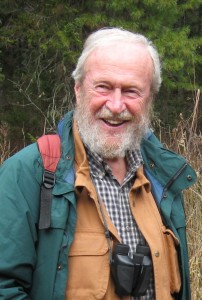
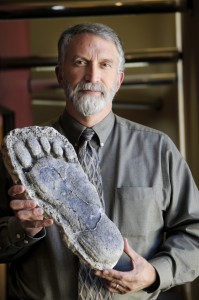 Dr. Jeff Meldrum holds a doctorate in anatomical sciences from the State University of New York at Stony Brook. He is currently an Associate Professor of Anatomy & Anthropology in the Department of Biological Sciences at Idaho State University. His formal study of primates began with the terrestrial adaptations of African primates, and has since taken him from the skeletal cabinets of far-flung museums, to the remote badlands of Colombia and Argentina in search of fossil New World primates. He has published extensively on the evolutionary history of the South American primates and has described several new extinct species. His attentions are also directed at the emergence of modern human bipedalism and the analysis of fossil hominid footprints. His co-edited volume, From Biped to Strider: the Emergence of Modern Human Walking, Running, and Resource Transport, redirects attention from the origins of simply walking on two legs, to the pattern of emergence of the innovations specifically unique to modern human gait. His interests in the footprints attributed to an unrecognized North American ape, commonly known as sasquatch, came into focus when he literally crossed paths with an enigmatic set of tracks in the mountains of Washington State. He has conducted collaborative laboratory research and field work throughout the Pacific Northwest and Intermountain West, as well as China and Russia, and has spoken about his findings in numerous interviews, television appearances, public and professional presentations. His book Sasquatch: Legend Meets Science was described by Dr. Jane Goodall as bringing “a much-needed level of scientific analysis to the sasquatch – Bigfoot – debate.” He currently edits The Relict Hominoid Inquiry, a refereed on-line journal promoting scientific dialogue on this intriguing question.
Dr. Jeff Meldrum holds a doctorate in anatomical sciences from the State University of New York at Stony Brook. He is currently an Associate Professor of Anatomy & Anthropology in the Department of Biological Sciences at Idaho State University. His formal study of primates began with the terrestrial adaptations of African primates, and has since taken him from the skeletal cabinets of far-flung museums, to the remote badlands of Colombia and Argentina in search of fossil New World primates. He has published extensively on the evolutionary history of the South American primates and has described several new extinct species. His attentions are also directed at the emergence of modern human bipedalism and the analysis of fossil hominid footprints. His co-edited volume, From Biped to Strider: the Emergence of Modern Human Walking, Running, and Resource Transport, redirects attention from the origins of simply walking on two legs, to the pattern of emergence of the innovations specifically unique to modern human gait. His interests in the footprints attributed to an unrecognized North American ape, commonly known as sasquatch, came into focus when he literally crossed paths with an enigmatic set of tracks in the mountains of Washington State. He has conducted collaborative laboratory research and field work throughout the Pacific Northwest and Intermountain West, as well as China and Russia, and has spoken about his findings in numerous interviews, television appearances, public and professional presentations. His book Sasquatch: Legend Meets Science was described by Dr. Jane Goodall as bringing “a much-needed level of scientific analysis to the sasquatch – Bigfoot – debate.” He currently edits The Relict Hominoid Inquiry, a refereed on-line journal promoting scientific dialogue on this intriguing question.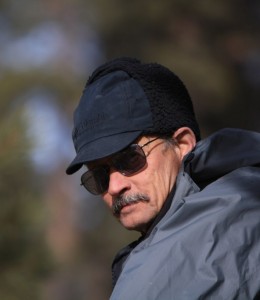 John Mionczynski is a professional wildlife biologist with over 35 years experience in the Rocky Mountains and Africa. Much of his research attention has been focused on grizzly bears and mountain sheep. He has trapped and monitored grizzlies in the Greater Yellowstone Ecosystem and investigated the environmental threats to the Bighorn sheep in Wyoming’s Wind River Range. He is a professional ethnobotanist with extensive knowledge of Native Aerican uses of edible and medicinal plants. He also pioneered current goat-packing techniques. John’s interest in the sasquatch began with a personal encounter in the Winds. He has since conducted filed research throughout the western US for the North American Ape Project.
John Mionczynski is a professional wildlife biologist with over 35 years experience in the Rocky Mountains and Africa. Much of his research attention has been focused on grizzly bears and mountain sheep. He has trapped and monitored grizzlies in the Greater Yellowstone Ecosystem and investigated the environmental threats to the Bighorn sheep in Wyoming’s Wind River Range. He is a professional ethnobotanist with extensive knowledge of Native Aerican uses of edible and medicinal plants. He also pioneered current goat-packing techniques. John’s interest in the sasquatch began with a personal encounter in the Winds. He has since conducted filed research throughout the western US for the North American Ape Project.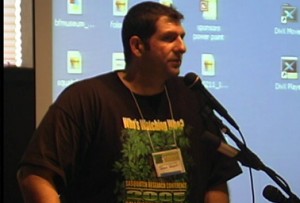 Jason Valenti was inspired to get involved in Hominoid research after his own personal sighting in Apalachicola National Forest in 1996. He has been out in the field on many occasions to search for Hominoid evidence. He hosted the 2005 Sasquatch Research Conference in Bellingham, WA, and has been a guest on numerous radio shows over the last decade, as well as a documentary. He has his own business, Infinite Web Solutions, and has provided multi-media solutions to customers for over 8 years. With his knowledge in digital and electronic media, he is able to provide technical support along with innovative ideas for solutions. He also has a background in electronics, electrical and mechanical repair, as he grew up in a family business that serviced bio-medical equipment.
Jason Valenti was inspired to get involved in Hominoid research after his own personal sighting in Apalachicola National Forest in 1996. He has been out in the field on many occasions to search for Hominoid evidence. He hosted the 2005 Sasquatch Research Conference in Bellingham, WA, and has been a guest on numerous radio shows over the last decade, as well as a documentary. He has his own business, Infinite Web Solutions, and has provided multi-media solutions to customers for over 8 years. With his knowledge in digital and electronic media, he is able to provide technical support along with innovative ideas for solutions. He also has a background in electronics, electrical and mechanical repair, as he grew up in a family business that serviced bio-medical equipment.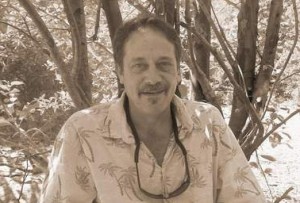 William Barnes is the Owner and Founder. Jason Valenti is the Director of Marketing, Public Relations and Digital Media Creation. William Dranginis is our Technical Director for Imaging Platforms and Infra-Sound Equipment.
William Barnes is the Owner and Founder. Jason Valenti is the Director of Marketing, Public Relations and Digital Media Creation. William Dranginis is our Technical Director for Imaging Platforms and Infra-Sound Equipment.